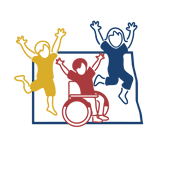Consult Line: (888) 522-9654
The North Dakota Pediatric Mental Health Care Access Line connects Primary Care Providers with a Child and Adolescent Psychiatrist for consultation during daytime business hours.
According to the American Academy of Child and Adolescent Psychiatry,
“Attention Deficit Hyperactivity Disorder or ADHD is a common childhood illness. People who are affected can have trouble with paying attention, sitting still and controlling their impulses. There are three types of ADHD. The most common type of ADHD is when people have difficulties with both attention and hyperactivity. This is called ADHD combined type. Some people only have difficulty with attention and organization. This is ADHD inattentive subtype or Attention Deficit Disorder (ADD). Other people have only hyperactive and impulsive symptoms. This is ADHD hyperactive subtype.”
The information below is provided to guide medical providers in treatment as well as to provide information/resources to parents and youth regarding ADHD.
While medications may be used to treat the symptoms of ADHD, there are other cognitive and behavioral therapies that have been evidence-based to help alleviate symptoms as well.
Behavioral therapy can be assistive in assisting in the control of aggression, modulate social behavior and increase productivity or time on tasks.
The Cognitive Behavioral Therapy (CBT) is another form of therapy that can assist in alleviating some of the symptoms of ADHD. In CBT a therapist may focus on increasing the child’s self-esteem, develop problem solving skills which would examine all the steps and slow down the otherwise impulsive responses. CBT can also help to decrease negative self-messaging.
Additional recommendations for treatment to increase the success of a child’s performance can include parent education skills. This can be as simple as needing to give one step directions to how to organize homework time so it is less challenging.
Modifications may also need to be considered for the educational program the child is in.
A Parents’ Medication Guide was created by the American Academy or Child and Adolescent Psychiatry and the American Psychiatry Association. It includes many other resources as well.
For children/adolescents:
For families:
The North Dakota Pediatric Mental Health Care Access Line connects Primary Care Providers with a Child and Adolescent Psychiatrist for consultation during daytime business hours.

The North Dakota Pediatric Mental Health Care Access Program (PMHCA) strives to increase the capacity of primary care providers to assess and provide treatment to children and adolescents who have behavioral/mental health conditions by linking them to child and adolescent psychiatry providers and other behavioral health professionals.